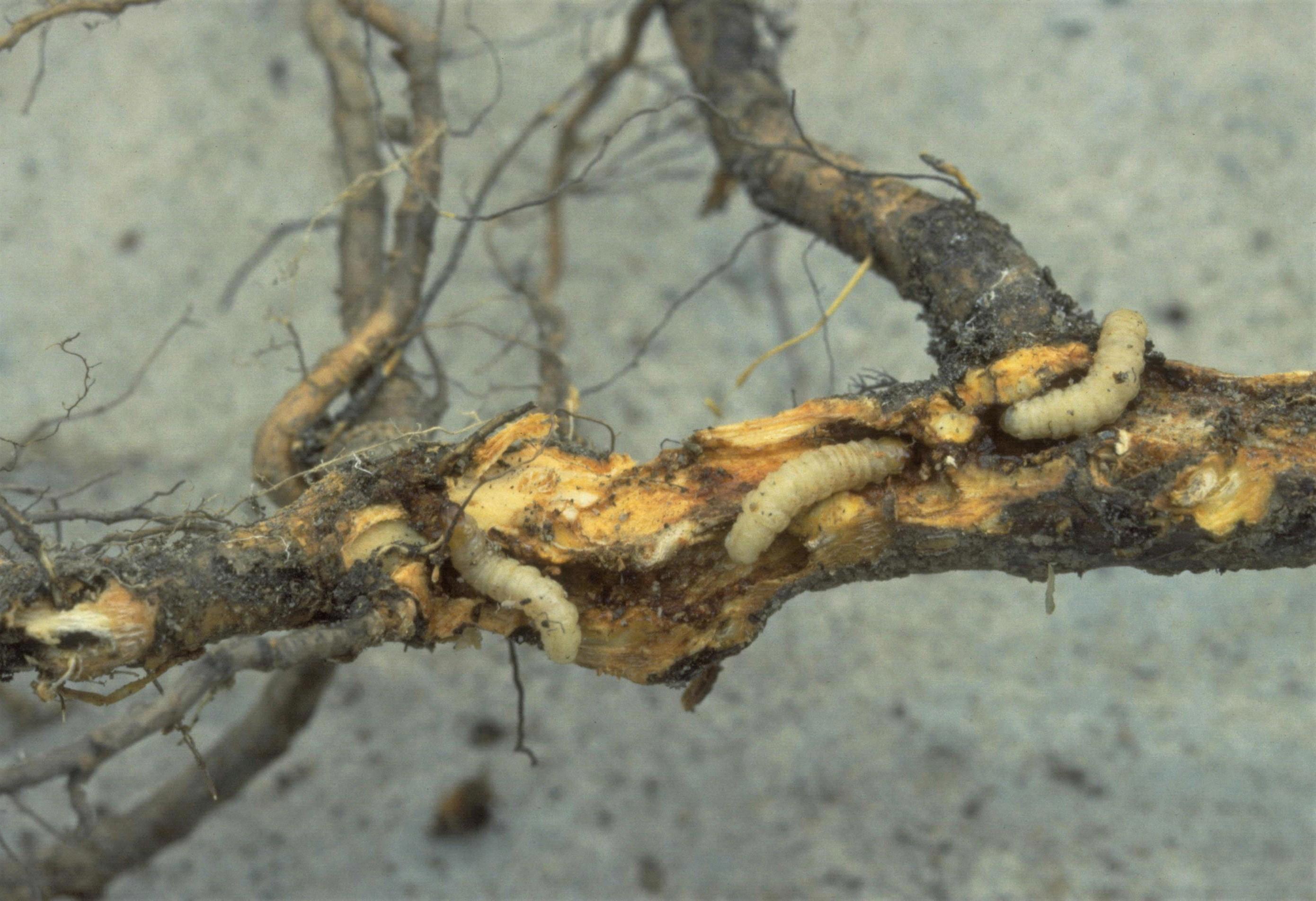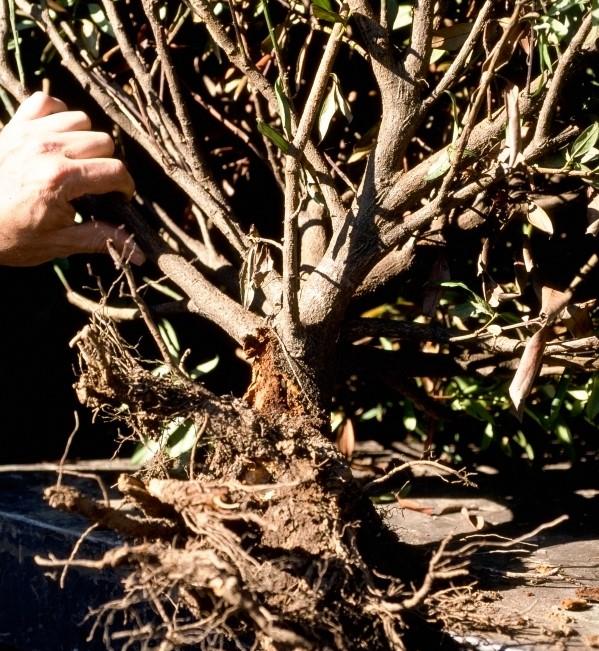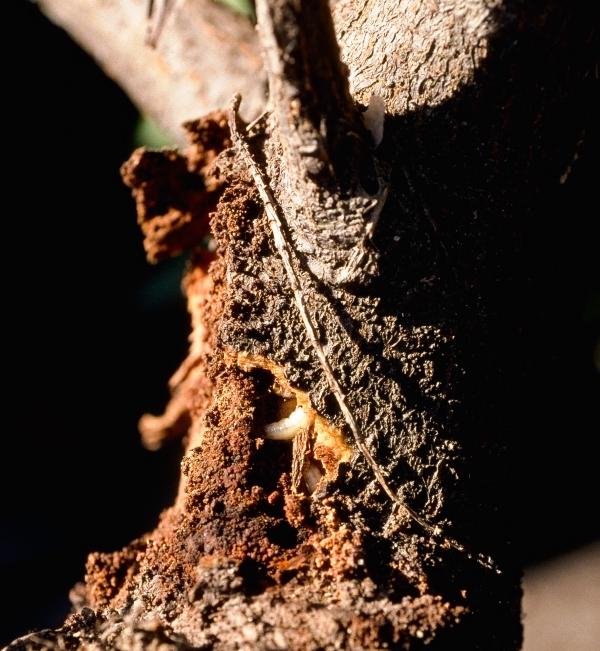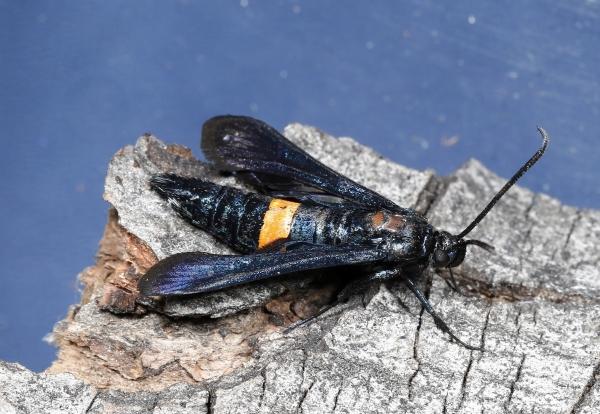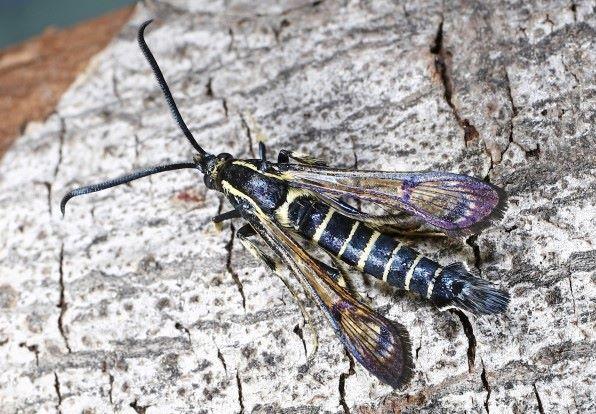Key points
- Borers of shrubs may be either clearwing borers or beetles.
- Clearwing borers are the larvae or caterpillars of clearwing moths. The moths resemble wasps in appearance. Larvae (caterpillars) are creamy colored with brown heads. The larvae of clearwing borers push frass out of tunnels via holes.
- Larvae of beetles pack frass in their tunnels and holes are only evident after the adult beetles have emerged from the infested plant.
- Several species of clearwing borers attack broadleaved shrubs. They include peach tree borer, lesser peach tree borer, lilac borer, and rhododendron borer. The rhododendron stem borer is the most common beetle borer in shrubs.
- Peach tree borer is primarily a pest of Prunus in the landscape. Cherry laurel is the primary shrub that it attacks. Look for leaf yellowing, dieback and the presence of gummosis and/or frass at the root crown. (Cast pupal skins may be visible at exit holes - see photo above.) Lesser peach tree borer looks similar to peach tree borer and is also primarily a pest of Prunus. In addition to cherry laurel, it also attacks flowering almond. Symptoms are the same.
- Ash/lilac borer (Podosesia syringae) is a pest of lilac and ash. The larvae bore in the heartwood and push frass out of openings into the tunnels. Continual reinfestation of a shrub results in branch dieback. Heavy infestations may kill plants. Look for the presence of dead canes in the center of a lilac bush and examine them for holes in the bark (pupal cases may be visible at exit holes). Prune out all dead and dying canes as close to the ground as possible.
- Rhododendron borer causes wilting of leaves and twig dieback. (Frass may be visible below borer holes.) Prune off the suspected branches and split them open longitudinally to see if larvae are present. Mature larvae are about 1/2 inch long, white with brown heads. The adult moths have mostly clear wings and black bodies with 3 gold bands on the abdomen. Boring larvae may cause branches to crack. Heavy infestations cause wilting and eventual branch dieback. This borer prefers rhododendron but occasionally attacks deciduous azalea and mountain laurel. There is one generation a year and larvae overwinter in tunnels in branches.
- Rhododendron stem borer causes wilting terminals and dieback, which is similar to the Rhododendron borer. This borer, however, is a longhorned beetle. Adult beetles feed on the underside of leaves on the midvein, causing the leaves to curl. The larvae bore down the twigs causing individual branches to wilt, and eventually dieback to the ground. The adult beetles are about 5/8 inch long, have long antennae, and are pale yellow with 2 black spots on the thorax and on the margins of the wing covers. Adults are present in June and July. The larvae are whitish and have no visible head. This beetle prefers rhododendron, but will also attack azalea and mountain laurel. The larvae overwinter in branches the first year and in roots the second year.
